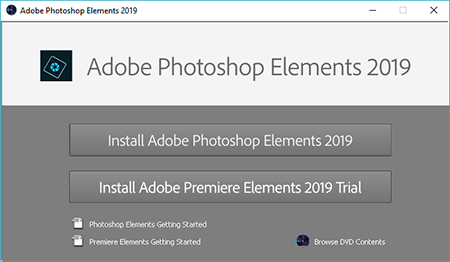Fluffland Mac OS
Py2/py3 script that can download macOS components direct from Apple - dhinakg/gibMacOS-1. If you have a Mac with a PowerPC processor (you can get this info from the Apple Menu, under 'About this Mac') and you don't need Classic, then 10.5 'Leopard' is the end. 10.6 'Snow Leopard' is the last Mac OS version with Rosetta, the compatibility layer that lets newer Intel processor Macs run PowerPC programs. Read reviews, compare customer ratings, see screenshots, and learn more about 100% Hidden Objects. Download 100% Hidden Objects for macOS 10.6.6 or later and enjoy it on your Mac.

Fluffland Mac Os X
Mac-PC Networking, Launcher Problems, & Cable/DSL Security Hello! Here we are yet again. We've got heaping truckloads of juicy tidbits for you this week, so I'll spare you with the standard fluff and banter to which I normally subject you. Still, there's something to be said about Clezmer music as an antidote to scorpion bites, but alas, I digress. Anyway, eel free to e-mail your questions to me or post away in the forums. For now... on to the questions!
Well, Joshua, what you want is certainly available, but depending on how much you're willing to sacrifice ease-of-use, you may find that buying software is indeed in your future. That said, lets explore the options here. The *easiest* way of doing this would be to invest in something like DAVE from Thursby Software, or PC MacLan Connect from Miramar Systems. Both of these packages let your Macs and PCs talk to each other and share files and printers. The former is something you install on your Mac to let it 'speak Windows', while the latter is installed on the PC enabling it to 'speak Mac.' To clarify, you don't need both of these. Either one will suffice, and allow both computers to share files with each other easily. But those cost money, and you said you wanted to avoid that. So we need to look at what other options we have. There's nothing free that will let you share files this way, but we can investigate Internet-related options that could work. By using the TCP/IP protocol, we can take advantage of all the FTP and HTTP clients freely available out there. Unfortunately, there don't seem to be any completely freeware FTP servers (however there are a few Shareware ones available, like CrushFTP), so we need to look at the stuff included with the Mac OS. With 9.0.4 you can enable Web Sharing. Web Sharing actually has a pretty nifty file browser-type interface, and that might suffice for copying data to your Windows machine via a web-browser interface. If anyone else has other suggestions, please feel free to mention them in the Ask Dave! Forums.
For Jason -- I think I have your answer! Close your Launcher. Then open up your System Folder, open the Preferences folder, and delete the 'Launcher Preferences' file. This appears to be where the Launcher stores its window-size variable, and by deleting this it will reset the Launcher to its default position and size in the lower left-hand portion of the screen. That's it! For the rest of you -- I figured I would include this in the column since deleting an application's preferences files are often the easiest way to 'reset' something that appears to have no other solution. This works for the Finder, as well, with the only caveat being that you need to trash the Finder Preferences file and then reboot for your changes to take effect. So next time you're looking for the way to 'undo' that setting you can't find, try deleting the preferences (and, for Microsoft Word, also delete the 'Normal' template, as this contains many of Word's settings).
Ok, well, there's probably a lawyer out there cringing at the thought that I might even CONSIDER publishing this type of advice, but, well, it's their job to cringe! That said, I should probably preface this by saying that what I'm about to tell you is by no means guaranteed, and is really just what I would use for my own systems. So consider yourself prefaced. :-) Call me a wimp, if you want, too... I just don't have time for another lawsuit! Anyway, on to the meat. Cable and DSL modems don't expose you any more than a traditional dial-up connection does when you're connected. Once connected with your dial-up, you are 'at risk' from those folks out there who like to probe. However, since Cable and DSL are 'always on' types of connections, your risk factor jumps because you are at risk whenever your computer is turned on (basically). That said, TCP/IP file sharing is the biggest security risk. If you are running Mac OS 9, or have some other form of TCP/IP-based file sharing, then you need to make sure you've disabled Guest access and have passwords set for ALL your users that can connect. Alternatively, you could just turn the TCP/IP portion of file sharing off (there's a checkbox in the File Sharing Control Panel), and use AppleTalk, which most cable and DSL modems don't route. That will basically protect you. However, people can still 'ping' your computer, and if you have Web Sharing enabled, they can get into your files that have been made accessible as such. There are many solutions for 'Firewalling', but to be honest, I don't see them as entirely necessary for the home user. That's just my take. By nature, a firewall will block access to and from specific computers or specific ports on those computers, rendering many features unusable, including many online games, streaming protocols, and the like. In essence, 99% of the time your firewall will be blocking YOU from doing something you want to, and only 1% of the time from some nosy kid poking around the Internet to see who has what turned on! However, if you're interested in seeing exactly what is happening and WHO is trying to access your machine, there are a few pieces of software you might want to check out. NetBarrier from Intego, SoftRouter Plus from Vicomsoft, DoorStop from OpenDoor Software, and even IPNetRouter from Sustainable Softworks all provide different levels of monitoring and packet filtering for your security/curiousity needs! The bottom line is that, as a home user with TCP/IP File Sharing disabled, you probably don't have anything to worry about. However, the aforementioned software will allow you to monitor your connection and see for sure! That's it for today, folks. Have a great week, and I'll see you next time. Feel free to e-mail me your questions at [email protected], or visit the Ask Dave! Forums and see what everyone has to offer! P.S. Have a Nice Day. Dave Hamiltonis President and CEO of The Mac Observer, Inc. He has worked in the computer industry as a consultant, trainer, network engineer, webmaster, and a programmer for most of the last 10 years. During that time he has worked on the Mac, all the various Windows flavors, Be, a few brands of Unix, and it is rumored he once saw an OS/2 machine in action. Before that he ran some of the earliest Bulletin Board systems, but most of the charges have since been dropped, and not even the FBI requests that he check in more than twice a year. Ask Dave is here to answer all the Mac questions you have. Networking, system conflicts, hardware, you ask it, he can answer it. He is the person from whom all Mac knowledge flows.... Current Columns From Ask Dave
The Ask Dave Archives |
Fluffland Mac Os 11

That's what I'm doing. Its going to be a genuine Mac Pro because the motherboard is Apple. We all know the motherboard is the crux of the deal. Memory, hard drives, optical drives, etc are just fluff. And my question is all about using a genuine Apple motherboard so I avoid OSX86 headaches. 'The Hitchhiker's Guide to the Galaxy is an interactive fiction computer game based on the seminal comic science fiction series of the same name. It was designed by series creator Douglas Adams and Infocom's Steve Meretzky, and was first released in 1984 for the Apple II, Macintosh, Commodore 64, Amiga, Atari 8-bit, Atari ST and the IBM PC.